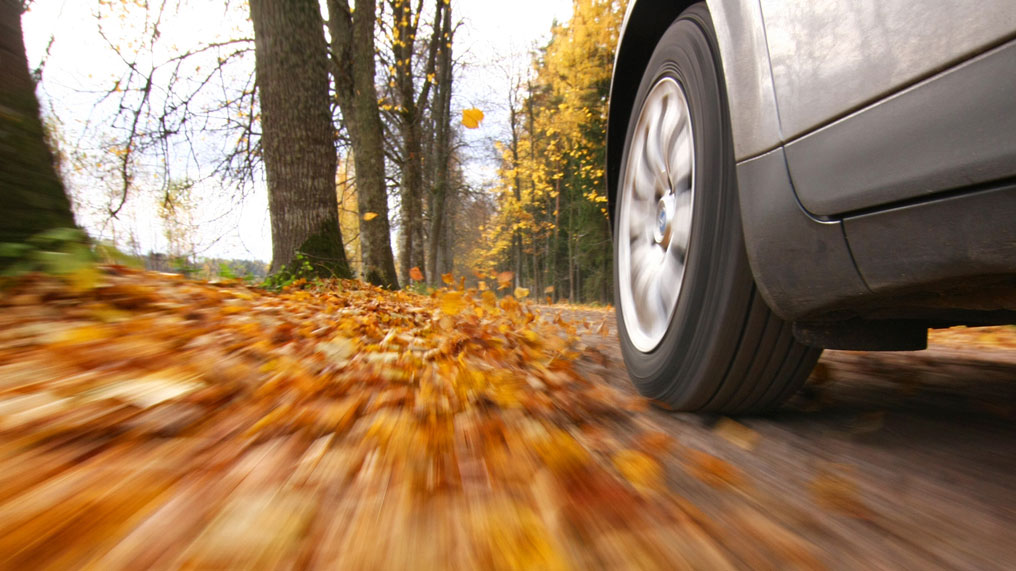This year’s summer barely seemed to start. But, now it’s definitely behind us now.
The trees are changing colour. The days are getting a little shorter. Halloween decorations are popping up (either far too early or very last minute).
Autumn is well and truly here.
From heavy rainfall causing floods on the roads, to mulch piling up under trees causing cars to slip and slide, autumn brings with it unique hazards for us motorists.
It pays to be prepared. With some simple checks and basic accessories, you can ensure that you’re ready for whatever the roads have in store this season.
1. Preparing inside the car
If this year’s (pretty non-existent) summer flew by in a blur and you can’t remember when you last cleaned the inside of your car, now’s the time to do it.
Damp autumn weather and low sun are a potentially dangerous combination, as they bring out the worst in a dirty windscreen.
So, grab a bottle of window cleaner and a microfibre cloth, and clean the inside of the windscreen and other windows to help prevent them from fogging. If they’re really dirty, you may need to go over them twice.
2. Preparing around the car
Be sure to check all your car’s bulbs are working. The easiest way to do this is to get a helping hand from a friend or family member. Have them walk around the car and keep an eye out as you try the side and taillights, headlamps, brake lights, indicators and fog lamps. And don’t forget the reversing light.
Before the worst of the wet and dirty weather sets in, have any chips in your car’s windscreen repaired. It helps prevent it from filling with debris or expanding into a crack.
Examine the condition of your wipers carefully and replace them if necessary. The rubber that sits against the screen shouldn’t be frayed or split, and the wipers should clear the screen without smearing.
And finally, if you have a spare day, ask yourself when did you last treat the paint to a wax and polish? If you’re not sure then give the car a good wash, wax the paint, then apply a polish to help protect it from the worst of the weather.
Your tyres are vital to staying safe on the road.
3. Preparing the tyres
Your tyres are vital to staying safe on the road.
As well as keeping an eye on your tyre pressure, it’s important to check your tread depth to ensure your tyres perform as well as possible.
If the tread drops below 3mm, you should consider replacing them. With tyres at the 1.6mm legal limit, independent tests show some cars can take an extra 44 metres to stop at motorway speeds in wet weather, compared to tyres at 3mm.
Roads are not only likely to be wet in the autumn, they’ll also be covered with fallen leaves, which turn into a soggy, slippery mulch. Not the nicest trio of words there, but it’s true. This is another reason to make sure your tread depths and tyre pressure are all good before hitting the roads over autumn.
4. Preparing under the bonnet
Grab your handbook, lift the bonnet (when the engine is cold) and roll up your sleeves: it’s time to check your car’s vital signs.
Start with topping up your screenwash, if needed.
This will help keep the windscreen and headlights clean during autumn’s tricky weather. A quick tip, unless you're using ready mixed, this should be diluted with tap water to the correct ratio according to the manufacturer’s instructions.
Next, ensure the level of engine coolant is correct.
Your car’s handbook will point out where the reservoir is, and the fluid should sit between the maximum and minimum marked points. Don’t go over or under these points. If the car is serviced according to the manufacturer’s schedule, then the mix of anti-freeze and coolant should already be correct.
The last check under the bonnet is the engine oil.
Do this at least 10 minutes after the engine is switched off, to allow oil to return to the sump. Grab two paper towels, one to grip and remove the dipstick (some cars may only have a digital readout; again, check the handbook) and the other to wipe the end of the dipstick clean. Pop the dipstick back in, take it out, and the oil should be between the minimum and maximum marks.
These checks won’t take long and could really help keep you and your vehicle safe on the road this autumn.




